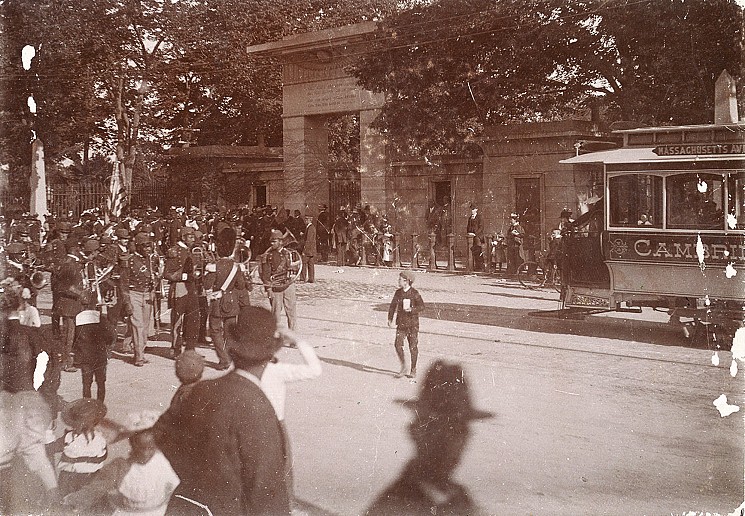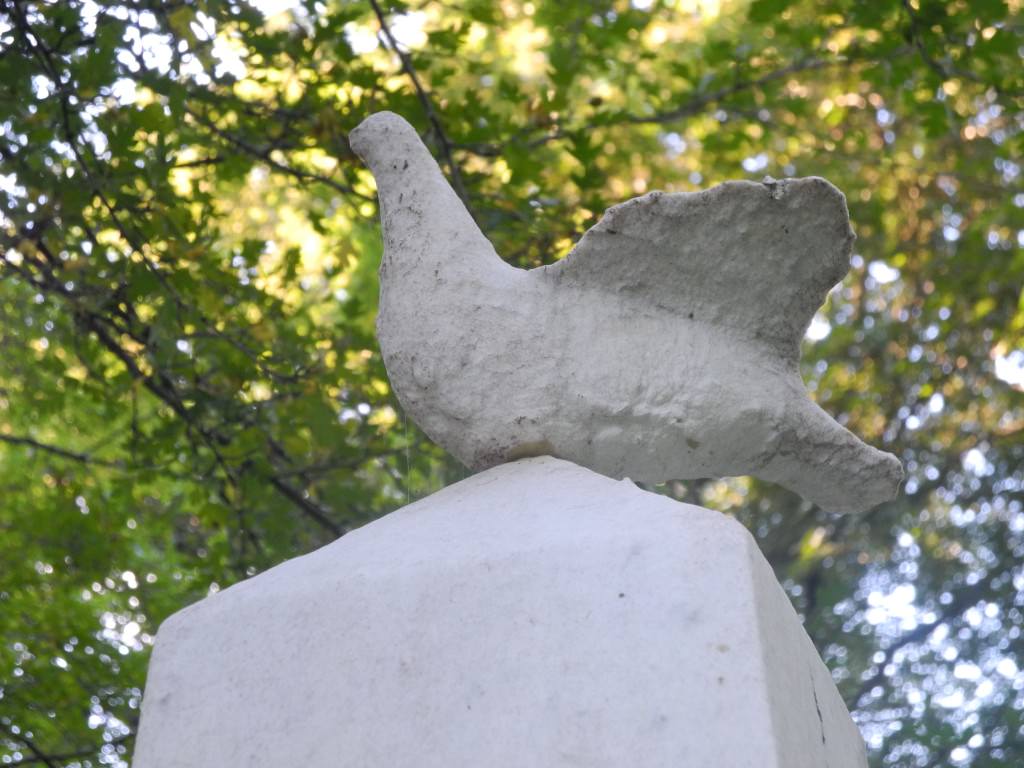African American Heritage Trail

INTRODUCTION
At the consecration of Mount Auburn Cemetery overlooking the dell on a cloudless September day in 1831, Mount Auburn’s first president Justice Joseph Story spoke of the spiritual offerings of the new rural cemetery. “The grave hath a voice of eloquence, nay, of superhuman eloquence,” he wrote, “which calls up the images of the illustrious dead . . . for our example and glory.”[1] The Black men and women represented on Mount Auburn’s African American Heritage Trail evoke Story’s spirit of human eloquence: freedom seekers and reformers, lawyers and legislators, athletes and business owners, musicians and authors. All born in the 1800s, these individuals achieved extraordinary success in politics, business, literature, and the arts. Their resolve and strength were sustained by a richly interwoven community of family, friends, and associates.
History is a clock that people use to tell their time of day. It is a compass that they use to find themselves on the map of human geography. It also tells them where they are, and what they are . . . . where they still must go, and what they still must be.
John Henrik Clarke,“Why Africana History?”
The Black Collegian, 1997
Why did these individuals chose to be buried at Mount Auburn? Founded as a nondenominational cemetery, it welcomed all faiths, races, and ethnicities from the time it first opened its gates. In 1864, an individual wrote to the weekly magazine, The Living Age, to inquire about the Cemetery’s policy on burying African Americans, having been told that “no other cemetery allows it.”[2] Mount Auburn’s Treasurer, George William Bond, responded that such policies “astonished” him, and that in regard to Mount Auburn, “In no case have I ever known an objection to be suggested.”[3] Edward Everett, president of Harvard and a trustee of Mount Auburn Cemetery, encouraged everyone, regardless of economic status, to consider the Cemetery. “Here it will be in the power of every one, who may wish . . . to deposit the mortal remains of his friends,” he wrote in 1832, “and to provide a place of burial for himself . . . surrounded with everything that can fill the heart with tender and respectful emotions; beneath the shade of a venerable tree, on the slope of the verdant lawn, and within the seclusion of the forest.”[4]
In contrast to other cemeteries that often set aside separate areas for African American burials, the graves of Blacks at Mount Auburn were not restricted to a single section. Rather they are located throughout the Cemetery’s grounds, reflective of its inclusive mission. Memorials are situated in family lots or at single gravesites. Some lots are embellished with ornate monuments or simple stones, others with no markers at all. In many cases, a monument may be the last surviving physical connection to an individual. A number of memorials on the African American Heritage Trail have suffered from years of exposure to the harsh New England weather. Fortunately, the Trail has inspired donations from individuals and organizations for the continued preservation of these monuments. Some are in need of washing and setting, while others require more costly conservation.
The sacred landscape of Mount Auburn was designed to commemorate the deceased and to provide visitors with a place for solace and inspiration. “It is to the living mourner . . . that the repositories of the dead bring home thoughts full of admonition, of instruction,” Joseph Story reflected. “They instruct us in the true value of life, and in its noble purposes, its duties, and its destination.”[5] The African Americans buried at Mount Auburn represent a rich mosaic of individuals, who advanced the opportunities for Blacks in the antebellum and post-war eras. Their lives tell a regional, national, and profoundly universal story.
This project has generated interest from scholars, researchers, and family descendants, who have deepened our knowledge of the African Americans buried at Mount Auburn. This first iteration of the Cemetery’s African American Heritage Trail, which includes those born in the nineteenth century, is the beginning of a story that will continue to unfold as scholarship continues and as the memorials of other individuals are added to the Trail.
EXPLORE THE TRAIL

Mount Auburn Cemetery’s African American Heritage Trail illuminates the history of individuals who found their final resting place in a new cemetery that embraced all faiths, races, and backgrounds, and within an interconnected community of those who fought for human equality.
FOOTNOTES:
1 Joseph Story, “An Address Delivered on the Dedication of the Cemetery At Mount Auburn, September 24th, 1831,” in Jacob Bigelow, A History of the Cemetery of Mount Auburn, Boston: J. Munroe and Company, 1860, pp. 156-157.
2 Correspondence in The Living Age, Vol. 81, No. 1039, April 1864, in E. Little, The Living Age, Third Series, Volume XXV, Boston: Little, Son, and Company, p. 193.
3 Ibid.
4 Edward Everett in Horticultural Proceedings, 1832, in Jacob Bigelow, A History of the Cemetery of Mount Auburn, Boston: J. Munroe and Company, 1860, pp. 138-139.
5 Joseph Story, “An Address,” pp. 147-148.
TOP IMAGE:
Visitors including African American musicians gathering in front of Mount Auburn’s Egyptian Revival Gateway, ca. 1870-1900 cabinet card. Historical Collections, Mount Auburn Cemetery.
ACKNOWLEDGEMENTS
Funding for this project has been provided by the 1772 Foundation; Mass Humanities; the Association for the Study of African American Life and History (made possible by the National Park Service, National Underground Railroad Network to Freedom); the Cambridge Arts Council and the Watertown Cultural Council (local agencies supported by the Massachusetts Cultural Council, a state agency); and contributions from Sydney Nathans, Mary K. Zervigon, and the family of Katherine Knox.



5 Comments
-
Pingback: 9 ways to celebrate Black History Month in Boston and beyond - Black News
-
Pingback: Black History Month events in Boston and beyond – Celebrity Land International
-
Pingback: 9 ways to celebrate Black History Month in Boston and beyond - Boston55 Rentals
-
Pingback: Black History Month events in Boston and beyond – The Martha’s Vineyard Guide
-
Pingback: Black History Month events in Boston and beyond - Young Black Stars of The World!